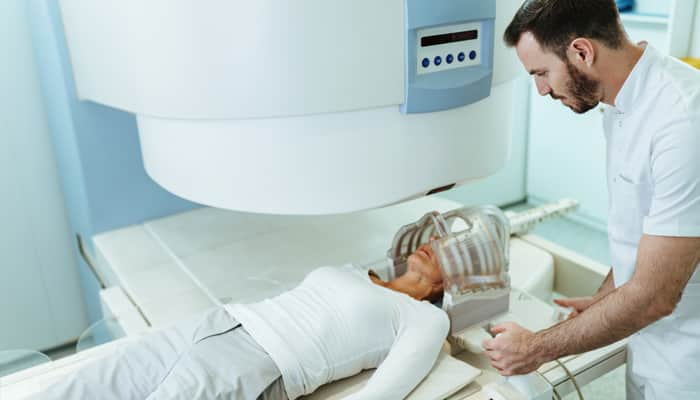
From Chronic Illness to Wellness: One Woman’s Story
Published: December 2020
Prior to turning eighteen, most of my teenage years were spent fantasizing about the day I could leave my difficult (some may say abusive) home and childhood. I felt it was important to weave my difficult childhood into my story because we now know that health and healing are not always just physical. I go into further detail on the topic of my childhood in my book, Eat Pray Get Well ~ A Journey from Chronic Illness, Brokenness & Junk Food Junkie to Wholeness & Wellness.
Once I turned eighteen, my dream did indeed come true. I landed a job in Manhattan, and I was thrilled to be embarking on a new life. Part of this new life came with weeding out the unsafe apartments that so easily fit into my next to nothing budget. The apartment I settled on included visible mold and the occasional mouse (perhaps it was a rat), and of course, plenty of New York roaches. Nothing a typical New Yorker hasn’t seen or experienced. It may sound less than desirable to most, but I was happy! I was finally out on my own and excited to explore the big apple. Although I grew up in the Bronx, only a subway ride away, Manhattan was a different world. A world full of culture, freedom and, most importantly, opportunity. I would only occupy this apartment for nine months, but it would prove to change the course of my life and health for decades to come.
My exciting New York journey did not begin with exploring the city. Instead, I found myself exploring the insides of doctors’ offices. My lunch hour and every spare moment became dedicated to visiting doctors and specialists (I estimate I have seen over 60), some of which were supposedly Manhattan’s “best of the best.” I thought, for sure, one of these brilliant doctors could help me unravel the misery and the mystery of my failing health. But despite all of those visits, I would only continue to spiral downward. I racked up diagnoses and illnesses and was prescribed endless amounts of medications.
What are these bizarre new symptoms?

Within just a few days of moving in, I experienced a runny nose. I could no longer tilt my head forward without a watery discharge embarrassingly dripping onto the floor, table or my clothes. I was quickly diagnosed with my first sinus infection. Sinus infections are so common that a staggering 30 million Americans are diagnosed each year, according to the Centers for Disease Control and Prevention. This, however, was no ordinary sinus infection. I would spend the next two decades trying to eradicate the infection with antibiotics, steroids, four sinus surgeries and even strange concoctions that I bought on the internet, which promised to “cure” my infection. With all of these medical interventions, I continued to grow sicker.
If I thought a sinus infection as my constant companion was bad enough, I was wrong. One year into treating it with continuous antibiotics, I developed fatigue so severe, I found it difficult to perform normal daily functions. On the worst of days, even speaking took more energy than I had. Heart arrhythmias shortly followed, as well as acid reflux (specifically Laryngopharyngeal reflux, which is a type of reflux where acid can reach up into the esophagus, which results in severe esophageal pain). I also had food allergies, autoimmune disease, fibromyalgia pain, nerve, joint and muscle pain, recurring Epstein Barr virus and chronically infected tonsils and adenoids, which I subsequently had removed.
Finding my “cause” was the first step to recovery

Out of sheer desperation, I was about to embark on a fifth sinus surgery when I took my chances on a new ear, nose and throat doctor. He took one look at my CT scan and proceeded to tell me I had one of the most severe fungal infections he had ever seen. He asked me if I had ever worked or lived somewhere that I could have been breathing in mold. My mind instantly returned to that little apartment I had rented sixteen years earlier, and just like that, I had my “cause.” Mold. I decided to learn everything I could about mold and fungus and their link to human disease. Most people spend years misdiagnosed before finally discovering fungus and yeast was at the root of their illness.
Coincidently, soon after my “fungal” diagnosis, I came across a television show called Know the Cause. The host Doug Kaufmann was discussing chronic sinusitis due to mold exposure. The pieces of my puzzle were starting to fit. Doug has studied mycology (the study of fungi) for over 50 years. After returning from Vietnam with bizarre symptoms and realizing that his doctors could not help him, he set out to heal himself. I believed he was just the man who could teach me.
Interestingly, I learned the years of antibiotics (and I have been on over 100 courses) only fueled my infection. That’s because many antibiotics are, in fact, fungal metabolites. Since then, I have become a regular guest on Doug Kaufmann’s show. I am very grateful that the show allows me to help others and provide them with hope.
Diet and nutrition that aided in my recovery

When I discovered some of my favorite foods, such as sugar and grains, cause fungus to thrive, I knew I had to make life-altering changes. Up to this point, my diet generally consisted of nothing but processed food. The transition wasn’t easy, but I decided to adhere to Doug Kaufmann’s diet. The theory behind the Kaufmann diet is to starve the fungi and yeasts that cause so many of our health problems, eventually eradicating them. The diet has two phases, Kaufmann 1, which is very low in sugar and carbs, and Kaufmann 2, which allows for a bit more carbs and sugar, such as brown rice and sweet potato. You can get a full explanation of the Kaufmann Diet and my Kaufmann diet recipes by visiting this page. I’ve also incorporated prescriptions, natural antifungals, and nutrients that I feel aided in my recovery listed below.
Betaine hydrochloride - Betaine hydrochloride is sometimes used to help adjust the levels of stomach acid to aid with acid reflux.1
Nicotinamide riboside – Helps to repair cellular DNA breaks.2
Glutathione, L-cysteine, and vitamin C – L-cysteine supports liver health & oxidative defense.3 Vitamin C fights free radical damage as well as colds and flu.4
NAC – Promotes healthy cellular glutathione levels (which may be decreased with exposure to mycotoxins), powerful antioxidant support and supports the immune system.5,6
Senolytics – Senolytics such as black tea theaflavins, quercetin and apigenin can clean out old cells (cellular debris), help reverse the aging process, promote youthful, healthy cellular function and help the body manage senescent cells.
CoQ10 – CoQ10 reduces free radical damage, suitable for fatigue, heart health. This is an excellent nutrient to take for people who have to be on statin drugs.
Chlorophyllin – Chlorophyllin is such a fantastic detoxing tool. For anyone affected by toxic mold (specifically aflatoxin like I was), chlorophyllin may help protect the DNA from damage caused by toxic mold.7,8 It may also help fight cancer.9
Probiotics – Replacing the good bacteria after a round of antibiotics is crucial.10
Colostrum – I also had to address my gut issues due to the enormous amounts of antibiotics. Colostrum is a great choice as it is rich in antibodies and growth factors, which can help heal the gut lining. Healing my gut also enabled me to stop taking Pepcid AC and Nexium after 14 years.
Oil of oregano – Oil of oregano is nature’s antibiotic and a potent antifungal! When fighting candida or even certain bacteria, switching between oil of oregano, garlic and caprylic acid may be extremely beneficial.11
About the author: Erin Porter
Erin Porter is the founder, photographer, blogger, author and recipe developer of Eat Pray Get Well.
References
- https://pubchem.ncbi.nlm.nih.gov/compound/Betaine-hydrochloride
- Croteau, D., Fang, E., Nilsen, H. and Bohr, V., 2020. NAD+ In DNA Repair And Mitochondrial Maintenance.
- Rui, L., 2014. Energy metabolism in the liver.
- https://lpi.oregonstate.edu/mic/vitamins/vitamin-C
- Guilford, F., and Hope, J., 2020. Deficient Glutathione In The Pathophysiology Of Mycotoxin-Related Illness.
- Millea, P. J., 2009. N-acetylcysteine: multiple clinical applications.
- Lifeextension.com. 2020. How Does Chlorophyllin Neutralize Environmental Toxins - Life Extension. [online] Available at: <https://www.lifeextension.com/magazine/2015/12/chlorophyllin-protects-against-environmental-toxins> [Accessed 19 August 2020].
- Jubert, C., Mata, J., Bench, G., Dashwood, R., Pereira, C., Tracewell, W., Turteltaub, K., Williams, D. and Bailey, G., 2009. Effects Of Chlorophyll And Chlorophyllin On Low-Dose Aflatoxin B1 Pharmacokinetics In Human Volunteers.
- Nagini, S., Palitti, F., Natarajan, A. T., 2015. Chemopreventive potential of chlorophyllin: a review of the mechanisms of action and molecular targets.
- Langdon, A., Crook, N. and Dantas, G., 2016. The Effects Of Antibiotics On The Microbiome Throughout Development And Alternative Approaches For Therapeutic Modulation.
- Smith, M., 2020. A Simple Antifungal Supplement Regimen. [online] Doug Kaufmann’s Know the Cause. Available at: <https://knowthecause.com/a-simple-anti-fungal-supplement-regimen/> [Accessed 19 August 2020].



